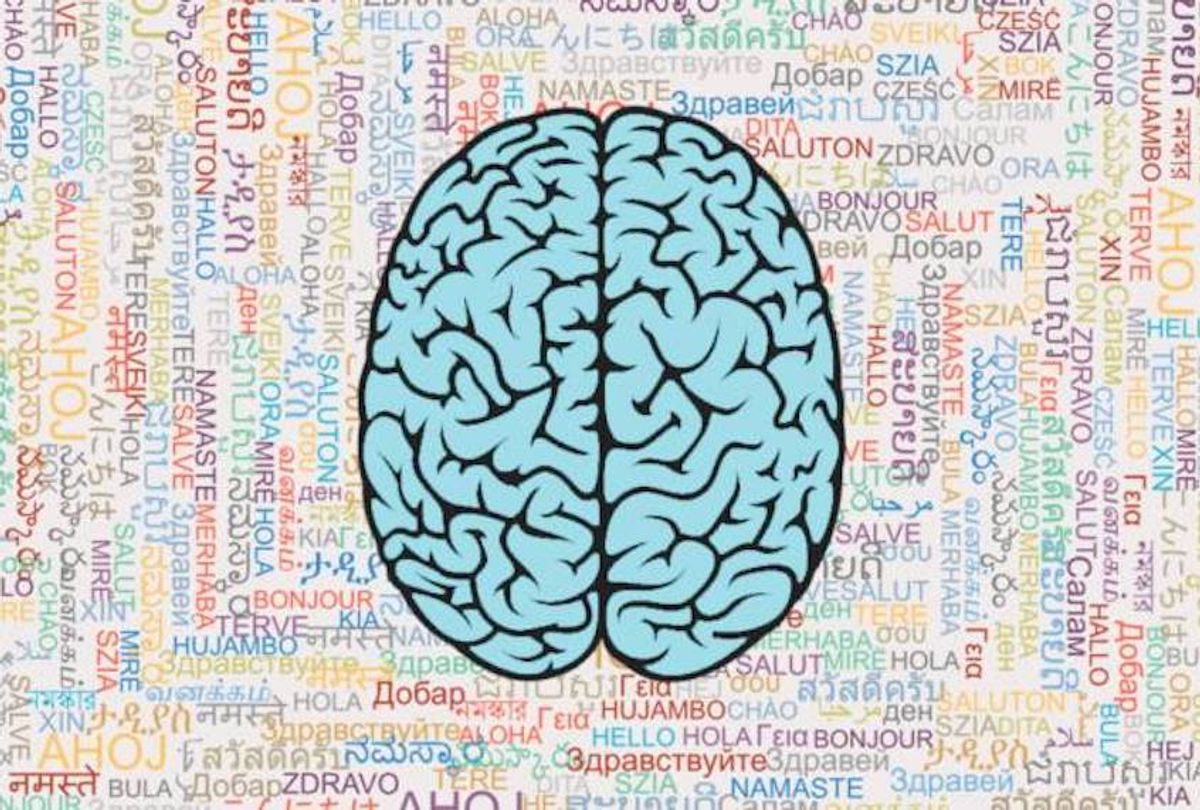Eishi Asano's latest work sheds light on those seemingly pesky words that litter our speech: uhs and ums.
As a neurologist at Wayne State University, Asano works on mapping human abilities to brain regions. One such important ability is the ability to use language. Neuroscientists have discovered that, like many little cogs in a wheel, a wide network of brain regions all work together to produce language. Certainly, the ability to communicate with others affects all aspects of life. Thus, protecting these brain regions during brain surgery is of high priority.
Asano has an opportunity few have: to study the brain in action. During a pre-surgical procedure called an electrocorticography (ECoG), an incision is made in a research participant's skull, and electrodes are placed directly on the exposed surface of their brain. He then presents them with photographs of complex scenes and asks them to describe it.
"This one has some, uh, hippos, who are swimming in the, uh, swamp, during the summer," a research participant in his study might say.
When they ran this study, Asano and his team were originally interested in deciphering which regions of the brain were responsible for describing what was in the picture (hippo), what they were doing (swimming), where (swamp) and when (summer). But, as his team rummaged through transcripts, what transpired between these words – the uhs – caught their attention.
Referred to as a "disfluencies" by linguists, uhs andums are often viewed as disruptions to the flow of speech. They are littered across our speech in all contexts, whether in presentations to a large audience, or in conversations with your closest pal. Estimates vary, but one research group found that such disfluencies pop up every 4.6 seconds, on average. They are equally short and overrepresented in all languages: French speakers say euh, Mandarin speakers say 那个, and ASL signers sometimes wiggle their fingers.
But while uhs and ums may seem like accidental nonsense words, disfluencies can actually provide us a rare window onto what's going on in the brain as we speak. For example, psycholinguists (scientists who study the psychology of language) argue that disfluencies can actually convey meaning. When researchers scoured through a corpus of transcribed speech, they found that a large proportion of disfluencies arose in specific locations: before difficult-to-pronounce and difficult-to-name words, or before words that haven't been recently discussed. In short, when we need some time to think of the next word, we make use of uhs and ums.
Asano's recent work, published in Scientific Reports, shows an example of this. Asano and his team inspected the brain activity of three adolescents that performed the scene-describing task depicted above. While three participants is a smaller sample size than is typical in neuroscience research, the technique used in this study, ECoG, provides more reliable data compared to other neuroscience methods. The fact that electrodes are placed directly on the cerebral cortex makes this technique less susceptible to "noise" in the data, such as from accidental movements by participants.
The three research participants varied in how disfluent they were, with one participant producing seven times more uhs and ums than another. Findings about brain activity, nonetheless, were consistent. "[When the participants] produced the disfluency, extensive areas of the association cortex showed activation," Asano says.
The association cortex is a group of areas on the surface (cortex) of the brain, which has previously been linked with language tasks that require relatively high amounts of linguistic effort. For example, these regions are highly engaged when producing words that have competing meanings. When producing the word "orange," our brains have to suppress the sense of the word that conveys a fruit if we are thinking about the color.
These findings reiterate the idea that uhs and ums, in and of themselves, are not causing speech to be disfluent. Rather, they are behavioral markers that speakers are working hard to find the next word, Asano says. When a speech task is more difficult, the association cortex works harder. And when the association cortex works hard, we sometimes produce disfluencies to fill the space.
Every person's brain is wired slightly differently, so having precise knowledge of the brain regions responsible for speaking, listening, and yes, even for being disfluent, is important for neurosurgeons who have to make important decisions for their patients.
"I remove brain regions that generate seizure activity for epileptic patients," Asano explains. "But, if you remove the wrong areas, then functionally important areas will be damaged." Indeed, there is some evidence that when parts of the association cortex sustain damage, patients may experience difficulty organizing their speech.
So, while they moonlight as mere speech errors, uhs and ums can actually give us insight into the brain. A healthy number of disfluencies in our speech let neuroscientists, and other listeners, know that we're experiencing a difficult speech moment — which is a perfectly acceptable sentiment to convey in many contexts. To err is human, after all.![]()




Shares